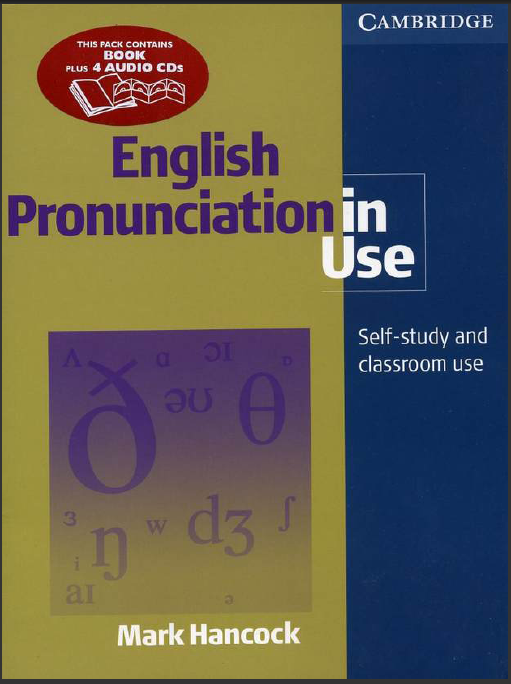One of the most overlooked difficulties of learning a language is learning how to pronounce words in an authentic way. No matter how hard a student tries, accent reduction and correct pronunciation is difficult to obtain. Imagine an American speaking French or a German speaking Hindi. It’s almost always evident that the person speaking is not a native speaker. But does that mean that getting the right pronunciation as a non-native speaker is a mythical illusion never to be obtained? It may seem like it, but all hope’s not lost.
Cambridge University Press recognized this dire need and put forth the book English Pronunciation in Use. The book is designed to help non-native English speakers to get the right accent. Being that the focus of the book is correct pronunciation, it comes as no surprise that this is a book-CD combination.
By listening to the CD and working with the book, the student is supposed to learn proper pronunciation. Yet, we’re a little confused as this seems like a listening exercise rather than a pronunciation one. Sure, the student will learn that the two nouns in “Phil the fox” have the same first sound and that “Myrtle the turtle” rhymes, but will that help the student to develop proper pronunciation or just help the student learn basic phonics?

The book does provide illustrations to show which part of the mouth should be working and how to make a certain sound. For example, when teaching the student the difference between “back” and “pack” there is a drawing of a mouth that shows the lips closed, stopping the air passage and thus creating the “ba” sound from the throat. For the “pa” sound, the drawing shows the mouth with open lips to release what it calls a “small explosion of air”. The student is then encouraged to listen to many words with “b” and “p” in them to identify the different sounds.
To the English speaker in me, this seems like it may be an effective way to learn. But, to the English speaker studying Hindi in me, I don’t think this is enough to help a student learn pronunciation. If the student’s native language does not differentiate from two sounds, then it is hard to ever learn the difference. When I’ve studied Hindi, I have had a very difficult time to differentiate from “ka” and “kha” or “ta” and “dta” because to an English speaker these two sounds seem almost exactly the same. However, to a Hindi speaker, they are worlds apart. If I learn words on my own, a native Hindi speaker almost always has to teach me the correct pronunciation later. Even if I “know” the correct pronunciation, I cannot do it unless being repeatedly coached by a native speaker.
"To the English speaker in me, this seems like it may be an effective way to learn. But, to the English speaker studying Hindi in me, I don’t think this is enough to help a student learn pronunciation."
That brings me to the point that English Pronunciation in Use is a great place to start. But, if you are studying English and truly want to get the correct pronunciation of words, you need to do more than just study and listen; you need a native speaker to correct your speaking. Believe it or not, there will be a lot of times when you think you are saying things exactly how the CD is saying it only to later find out from a native speaker that you are not.
If you are an English language teacher considering using this book and CD set with your students, by all means use it! It’s a great tool to help you structure your lessons, but don’t neglect the importance of giving your students direct pronunciation feedback and coaching.




